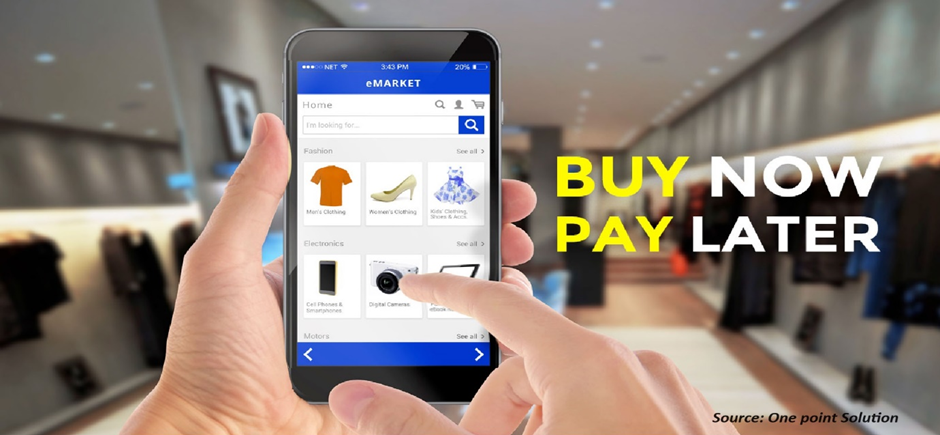
Germany Mobile Payment Market by Age (Generation Z, Millennials, Generation X, and Baby Boomers), by Payment Type (Proximity and Remote), and by Application (Money Transfers, Merchandise Purchases, Bill Payments, Airtime Top-ups, Ticketing, and Others) – Opportunity Analysis and Industry Forecast, 2024–2030
Industry: ICT & Media | Publish Date: 01-Sep-2024 | No of Pages: 111 | No. of Tables: 79 | No. of Figures: 44 | Format: PDF | Report Code : IC2475
Germany Mobile Payment Market Overview
The Germany Mobile Payment Market size was valued at USD 1.81 billion in 2023, and is predicted to reach USD 5.13 billion by 2030, with a CAGR of 15.1% from 2024 to 2030. The mobile payment system, also known as money transfer, mobile money, m-payments, electronic payments, and digital payments, facilitates financial transactions via mobile devices such as smartphones, tablets, and wearables.
These transactions occur through mobile apps or various methods such as proximity and remote transactions. Mobile payment systems comprise diverse types such as mobile wallets, mobile banking apps, and online payment services such as PayPal, Venmo, and Google Pay.
Employing technologies such as SMS, near-field communication (NFC), quick response (QR) codes, and others, these systems ensure seamless transactions while implementing robust security measures including encryption and biometric authentication to safeguard personal and financial data.
Praised for their convenience, speed, security, and integration with other financial tools, mobile payment systems experience widespread adoption. Additionally, users can configure payment apps to automatically settle bills, such as utility or credit card bills, ensuring efficient financial management and avoiding late payments.
Rise of Cross-Border Transactions Propel the Germany Mobile Payment Market Growth
The surge in the cross-border transactions emerges as a key catalyst propelling the mobile payment market expansion. As globalization gains momentum, businesses and individuals partake in international trade, commerce, and remittances on an unprecedented scale.
Mobile payment solutions present a convenient, cost-effective, and efficient means to conduct cross-border transactions, facilitating seamless money transfers and payments across borders.
With mobile payment platforms increasingly accommodating multi-currency transactions and offering competitive exchange rates, users can effortlessly transfer funds internationally, circumventing traditional banking intermediaries and their associated fees and delays.
Furthermore, the integration of cutting-edge technologies such as blockchain bolsters the security, transparency, and speed of cross-border payments, further fueling adoption. As cross-border transactions burgeon in volume and complexity, mobile payment providers stand to gain from expanding their global footprint, driving the Germany mobile payment market growth, and nurturing financial inclusion on a global scale.
Ease of Use in Mobile Payment Services Drives the Market Demand
Ease of use is one of the key drivers in the Germany mobile payment market demand, making platforms more accessible and user-friendly. Simplified interfaces, quick transactions, and robust security features build trust and encourage widespread adoption among both consumers and merchants. Clear support and education further enhance user confidence and ensure a positive experience, fostering long-term engagement and growth in the market.
Resistance from Traditional Financial Institutions Restrains the Market Expansion
The Germany mobile payment market expansion faces significant barriers due to resistance from traditional financial institutions in the country. Established banks and financial entities may perceive mobile payment solutions as disruptive to their existing business models, leading to reluctance in supporting or promoting these innovative technologies.
This resistance stems from concerns about potential revenue cannibalization, regulatory complexities, and the perceived threat of losing control over payment infrastructures. Consequently, traditional financial institutions may hesitate to invest in mobile payment initiatives or collaborate with fintech startups and mobile payment providers, impeding the development and adoption of innovative payment solutions.
Overcoming this resistance requires collaboration, regulatory alignment, and education to demonstrate the benefits of mobile payments for both financial institutions and consumers, thus unlocking the full potential of the Germany mobile payment market.
The Rise of Voice-Activated Mobile Payments Creates Opportunities in the Germany Mobile Payment Market
The ascent of voice-activated mobile payments presents thrilling opportunities within the Germany mobile payment market. These payment systems empower users to initiate transactions and carry out banking tasks through natural language commands, leveraging virtual assistants such as Amazon Alexa or Google Assistant.
This innovation offers unparalleled convenience, enabling users to execute payments hands-free and while on the move. Voice-activated mobile payments streamline the payment process, enriching user experience and enhancing accessibility, particularly for individuals with disabilities or limited mobility.
Furthermore, they open doors to new realms of integration with smart home devices, wearable technology, and IoT ecosystems, extending the reach and utility of mobile payment solutions. As voice technology evolves, the integration of voice-activated mobile payments into daily life presents promising prospects for innovation, differentiation, and market growth.
Competitive Landscape
Various market players operating in the Germany mobile payment industry include Alphabet, Inc. (Google), Alibaba Group Holdings Limited, Amazon.com, Inc., Apple, Inc., PayPal Holdings, Inc., Visa, Inc., Tencent Holdings Limited (WeChat), MasterCard International, Inc., Samsung Electronics Co. Ltd., Block, Inc., and others. These key players have adopted various strategies to strengthen their market share.
Germany Mobile Payment Market Key Segments
By Age
-
Generation Z
-
Millennials
-
Generation X
-
Baby Boomers
By Payment Type
-
Proximity
-
Near-Field Communication (NFC)
-
Quick Response (QR) Code Payments
-
-
Remote
-
Internet Payments
-
SMS/Direct Carrier Billing
-
By Application
-
Money Transfers
-
Merchandise Purchases
-
Bill Payments
-
Airtime Top-ups
-
Ticketing
-
Others
REPORT SCOPE AND SEGMENTATION:
|
Parameters |
Details |
|
Market Size in 2023 |
USD 1.81 Billion |
|
Revenue Forecast in 2030 |
USD 5.13 Billion |
|
Growth Rate |
CAGR of 15.1% from 2024 to 2030 |
|
Analysis Period |
2023–2030 |
|
Base Year Considered |
2023 |
|
Forecast Period |
2024–2030 |
|
Market Size Estimation |
Billion (USD) |
|
Growth Factors |
|
|
Companies Profiled |
10 |
|
Market Share |
Available for 10 companies |
|
Customization Scope |
Free customization (equivalent up to 80 working hours of analysts) after purchase. Addition or alteration to country, regional, and segment scope. |
|
Pricing and Purchase Options |
Avail customized purchase options to meet your exact research needs. |
KEY PLAYERS
-
Alphabet, Inc. (Google)
-
Alibaba Group Holdings Limited
-
Amazon.com, Inc.
-
Apple, Inc.
-
PayPal Holdings, Inc.
-
Visa, Inc.
-
Tencent Holdings Limited (WeChat)
-
MasterCard International, Inc.
-
Samsung Electronics Co. Ltd.
-
Block, Inc.




 Speak to Our Analyst
Speak to Our Analyst

































